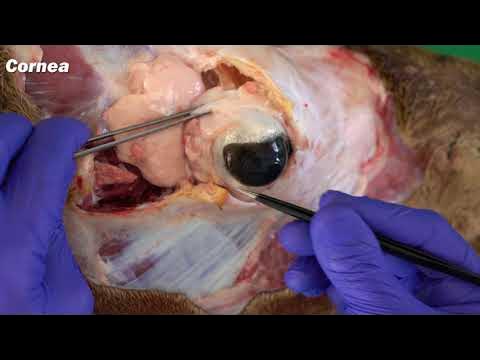Herring dissection
Summary
TLDRThis detailed video script covers the anatomy, physiology, and dissection of the herring fish (Clupea harengus). It describes the structure of the herring, including its head, trunk, tail, sensory organs, and various fins. The script explains the herring's respiratory, circulatory, and digestive systems, as well as its reproductive organs and urinary system. It also provides instructions for a thorough dissection of the fish to observe these systems, highlighting the swim bladder, gills, and gonads. The video is educational, offering a comprehensive look at the biological features of the herring.
Takeaways
- 😀 The herring's body is divided into three parts: head, trunk, and tail.
- 😀 The herring's head contains the mouth, nostrils, eyes, and ossified flaps covering the gills.
- 😀 Herring scales are cycloid, overlapping, and covered with concentric and radiating ridges, contributing to its color and sheen.
- 😀 The herring has both unpaired (dorsal, anal, and caudal fins) and paired (pectoral and pelvic fins) fins, essential for swimming.
- 😀 The skeleton of a herring is divided into four parts: skull, axial skeleton (spine and ribs), zonal skeleton (girdles), and appendicular skeleton (fins).
- 😀 Dissecting the herring involves cutting the abdominal cavity to reveal internal organs such as the heart, liver, gonads, and digestive system.
- 😀 The herring’s swim bladder plays a crucial role in maintaining neutral buoyancy by regulating the air inside.
- 😀 Herring breathe using gills, which are protected by an operculum and function through alternating mouth and gill movements for respiration.
- 😀 The herring circulatory system consists of a heart, which pumps blood through the gills for oxygenation and to the rest of the body via the aorta.
- 😀 The digestive system of the herring includes the pharynx, esophagus, stomach, intestines, and accessory glands (liver and pancreas), facilitating digestion and nutrient absorption.
- 😀 The reproductive system in herring is separate by gender, with external fertilization occurring during the reproductive period (November to January).
Q & A
What is the main purpose of the herring's gas bladder?
-The herring's gas bladder, also known as the swim bladder, plays a crucial role in maintaining neutral buoyancy, allowing the fish to stay suspended in the water at different depths.
What are the primary sensory organs of the herring?
-The primary sensory organs of the herring are the mouth, nostrils, and eyes. The mouth is used for feeding, the nostrils have an olfactory function, and the eyes help with vision, though they lack eyelids.
What is unique about the herring's scales?
-Herring scales are cycloid, meaning they have rounded edges. These scales overlap in a head-to-tail direction, and they are covered with concentric and radiating ridges, contributing to the fish's shiny appearance.
How does the herring perform its respiratory function?
-The herring breathes using gills located near the pharynx. Water enters the mouth, passes through the gill slits, and exits through the upper gill slits after oxygen exchange occurs in the gill filaments.
What is the role of the herring's heart in its circulatory system?
-The herring's heart is divided into four parts: the sinus venosus, atrium, ventricle, and bulbous arteriosus. It propels venous blood through the circulatory system, oxygenating it in the gills before it circulates to the rest of the body.
How are the herring's fins structured and what is their function?
-The herring has both unpaired and paired fins. The unpaired fins (dorsal, anal, and caudal fins) help with stability and propulsion, while the paired fins (pectoral and pelvic fins) assist with steering and balance.
What anatomical structures are involved in the dissection of the herring?
-During dissection, key anatomical structures include the gonads, heart, liver, digestive tract, gas bladder, gills, kidneys, and spleen. These are exposed by making incisions in the abdominal cavity and other parts of the fish.
What is the digestive tract of the herring composed of?
-The herring's digestive tract consists of the pharynx, esophagus, stomach, pyloric ceca, and intestine. The liver and pancreas serve as accessory digestive organs, and the gallbladder aids in the digestion of food.
What role do the gill arches play in the herring's respiration?
-The gill arches support the gills and are equipped with gill rakers, which help filter food particles from the water. The gill filaments within the arches provide a large surface area for oxygen exchange during respiration.
How is the herring's reproductive system structured?
-The herring has separate genders, with males and females having elongated gonads. Females have red-orange ovaries, while males have light-colored testes. The gonads release gametes for external fertilization in the sea, during the reproductive period from November to January.
Outlines

This section is available to paid users only. Please upgrade to access this part.
Upgrade NowMindmap

This section is available to paid users only. Please upgrade to access this part.
Upgrade NowKeywords

This section is available to paid users only. Please upgrade to access this part.
Upgrade NowHighlights

This section is available to paid users only. Please upgrade to access this part.
Upgrade NowTranscripts

This section is available to paid users only. Please upgrade to access this part.
Upgrade Now5.0 / 5 (0 votes)





